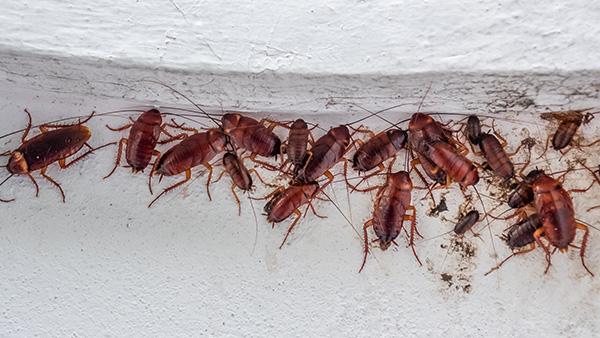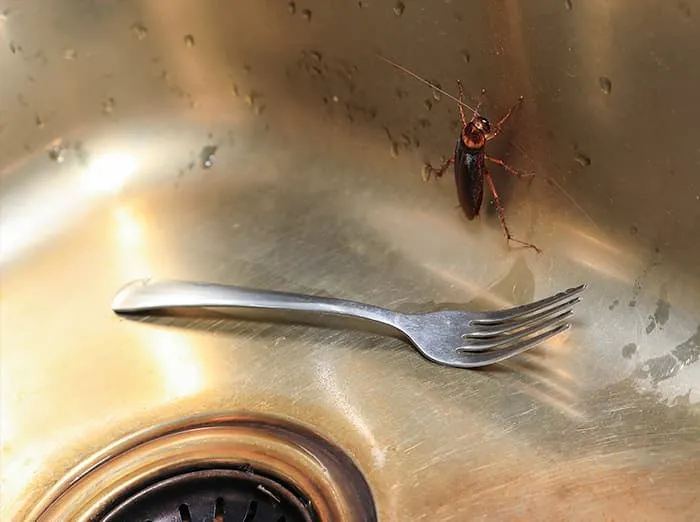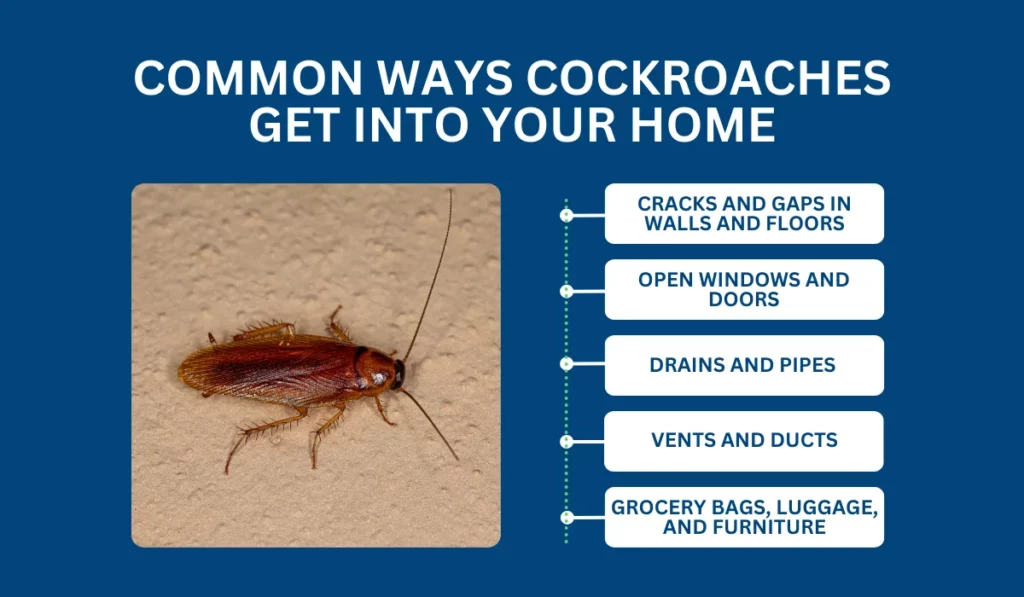Florida’s balmy climate, renowned for mild winters and year-round warmth, appeals to countless residents and tourists—but it also draws pests, most notably cockroaches. With abundant humidity, steady food sources, and minimal seasonal slowdowns, these resilient insects thrive in many Florida locales, including the elegant community of Coral Gable. Whether you oversee a home or business near Miracle Mile or manage one of the city’s classic Mediterranean-style properties, ignoring initial signs of roaches can lead to unsightly infestations, compromised sanitation, and occupant distress. This service page clarifies why cockroaches flourish in Florida, how to detect an incipient problem, and why a professional cockroach exterminator delivering targeted cockroach treatments is key to maintaining a clean, comfortable indoor environment. Acting promptly when roaches first appear spares property owners from further contamination, occupant unease, and more extensive remediation demands later on.
Why Cockroaches Thrive in Florida

- Mild Winters, Continuous Warmth
In northern states, sub-freezing temperatures cull roach populations for months, limiting breeding until spring. Florida’s winter rarely dips below freezing, allowing cockroaches to remain active year-round. Indoors, air conditioning or heating preserves roach-friendly warmth, supporting near-constant reproduction cycles if occupant vigilance lapses. - High Humidity and Rainfall
Roaches rely on moisture, which Florida’s humidity and regular rains supply in abundance. From damp corners in kitchens or bathrooms to leaky AC condensates, roaches exploit these water sources to thrive. Even minor plumbing leaks or condensation spots can encourage roach presence behind walls or under sinks. - Minimal Seasonal Dormancy
Unlike colder regions where harsh winter stifles roach proliferation, Coral Gables faces no prolonged freeze to slow them. A small roach population can swiftly become extensive, especially if occupant or housekeeping routines inadvertently leave leftover scraps or unsealed pantry goods accessible. - Plentiful Food Availability
Roaches devour almost any organic matter—discarded crumbs, unsealed pet food, or open trash bins. In neighborhoods where busy lifestyles or commercial traffic lead to neglected tidying or seldom-emptied bins, roaches find easy feeding grounds. Over time, stable supplies of water and food anchor them indoors. - Frequent Human Movement
With new residents arriving or short-term tenants rotating, roaches may hitch rides via cardboard boxes, furniture, or delivered goods. Once inside, they establish nests behind appliances or in cracks, avoiding occupant detection until droppings or nighttime sightings alert them to a growing problem.
Indications of a Cockroach Infestation
- Droppings
Different cockroach species leave distinct droppings. German roaches might produce tiny, pepper-like specks or small smears, while American roaches deposit larger, cylindrical pellets. Fresh droppings typically appear dark and moist, often near food or water sources such as behind stoves or under sinks. - Egg Casings (Oothecae)
Roaches lay egg capsules containing multiple eggs. Discovering these brownish, segmented capsules in drawers, along baseboards, or stuck to walls implies active breeding. Some species carry oothecae until they hatch, but others deposit them in hidden corners. - Musty or Oily Odor
A heavier roach presence can release a distinct, musty smell. Not every infestation reaches that level, yet if occupants sense an unexplained oily or foul odor—especially in humid spots like bathrooms or kitchens—it may point to roach gatherings. - Nighttime Sightings
Cockroaches prefer dark, quiet conditions. If flicking on lights at night reveals roaches scurrying across floors or counters, it signals a potentially advanced problem. Viewing them during daylight often indicates overcrowding forced them out from usual hiding spots, underscoring a serious infestation. - Smear Marks
In damp, high-traffic roach areas, they sometimes leave dark streaks or smear marks along walls or corners. Observing these lines in bathrooms, near drains, or behind fridges may confirm frequent roach activity.
Why Prompt Cockroach Treatments Are Crucial
- Health and Sanitation Concerns
Roaches can transport bacteria (like salmonella) from unsanitary areas to cooking surfaces, cupboards, or stored foods. Their droppings trigger allergies or asthma in some individuals. Eliminating them early safeguards occupant health. - Rapid Population Growth
Cockroaches multiply quickly—particularly German cockroaches. Over a few weeks, a pair can spawn numerous offspring if left unimpeded. Acting swiftly to remove a minor infiltration spares owners from major outbreaks spanning multiple rooms or floors. - Brand or Home Reputation
For businesses, spotting roaches spurs occupant complaints, negative reviews, or health code scrutiny. Quick, discreet extermination upholds occupant confidence in the property’s cleanliness. Even in homes, roach sightings can unsettle residents and guests alike. - Daily Stress
Sharing a kitchen or bathroom with roaches unsettles occupant routines. People might fear encountering them unexpectedly, worry about contamination, or constantly clean up droppings or shed skins. Prompt removal restores occupant peace of mind.

Why a Professional Exterminator is Essential
- Comprehensive Inspection
A cockroach exterminator begins by inspecting kitchens, bathrooms, basements, or any humid corners—places roaches gather for food and moisture. Identifying droppings, egg casings, or roach runways clarifies which species (German, American, smoky brown, etc.) and the best control method. - Precision in Chemical Application
Over-the-counter foggers can push roaches deeper into wall voids or under floors if misapplied. Professionals carefully place baits or insect growth regulators along roach travel paths, maximizing lethal contact while minimizing occupant or pet chemical exposure. - Integrated, Multi-Stage Approach
Roaches exist in egg, nymph, and adult stages. Exterminators use slow-acting baits that roaches bring back to nests, killing entire colonies, plus insect growth regulators preventing new nymphs from maturing. This synergy halts roach cycles at each life stage. - Sealing Entry Points and Sanitation Advice
Beyond immediate roach removal, occupant-driven measures—like sealing cracks, storing food in airtight containers, or fixing leaks—deny roaches the resources they need. An exterminator’s guidance cements a long-term solution, reducing re-invasion risks. - Follow-Up and Monitoring
Because egg casings might hatch weeks after initial treatments, scheduling a second check or occupant-based sticky traps ensures no newly emerged roaches survive. If occupant sightings remain, further spot treatments or re-baits confirm thorough eradication.
Methods for Cockroach Elimination
- Inspection and Mapping
The exterminator locates droppings or egg casings, checking behind appliances, under sinks, or near water lines. Documenting roach species (e.g., German cockroaches in kitchens, American roaches in basements) shapes trap or bait station placement. - Gel Baits and Bait Stations
Placing gel baits in cabinets, corners, or near baseboards invites roaches to consume poison they share with nest mates. This slow-acting toxin eliminates entire colonies over time. Occupants often prefer this approach since it’s minimal in occupant disruption. - Insect Growth Regulators (IGRs)
IGRs hamper egg or nymph development, ensuring new roaches never mature. Applied in cracks or roach runways, these regulators complement adulticidal baits or sprays, stopping roach population renewal. - Residual Sprays
Directed insecticidal sprays along common roach travel routes—like wall-floor junctions—kill roaches crossing treated surfaces. Occupants typically wait a short while for dryness, then resume normal routines. These sprays remain active for days or weeks, targeting new hatchlings. - Dust Applications
In wall voids or behind inaccessible fixtures, insecticidal dust clings to roaches passing through. Eventually, roaches groom themselves and ingest dust, proving lethal. The dust remains potent over extended periods.
Serving Coral Gables
Coral Gables: Known for its distinctive architecture, upscale shops, and scenic neighborhoods, Coral Gables is home to older homes with potential cracks or expansions providing roaches entrance if occupant vigilance wanes. Frequent occupant changes or travelers might also bring in roaches via packaging. Thorough occupant housekeeping—like promptly discarding trash, storing food properly, and sealing small openings—plus consistent pest checks hamper roach infiltration. Professional extermination ensures roaches do not overshadow the city’s historic charm.

Why Our Cockroach Treatments Excel
- Florida-Specific Knowledge
Because mild winters in South Florida rarely cull roach numbers, we emphasize occupant-based housekeeping (clearing crumbs, sealing bins) plus carefully placed baits and insect growth regulators to disrupt roach breeding. We adapt each plan to occupant routines and property layouts, ensuring roaches face lethal conditions year-round. - Precision and Minimal Chemical Usage
We focus on roach hideouts—like under sinks, behind refrigerators, or near damp corners—rather than saturating entire rooms. This targeted approach heightens roach contact with treatment zones while reducing occupant or pet chemical exposure. - Prevention Focus
Removing roaches is only half the process. We guide occupants on sealing cracks or weep holes, eliminating water leaks, and responsibly handling waste. This synergy stops new roaches from replacing those eradicated, guaranteeing occupant peace for the long haul. - Follow-Up Commitment
Because roach egg capsules can hatch weeks after adults die, occupant or scheduled re-checks confirm no new wave emerges. If occupant sightings persist, additional spot or perimeter solutions finalize extermination, giving families or businesses ongoing relief.
Next Steps
Spotting roach droppings near cupboards, noticing them skitter across floors when lights turn on, or detecting an odd musty odor in your kitchen? Contact us to learn more or schedule your service. Our cockroach treatments in Coral Gables employ proven tactics—from gel baits to insect growth regulators—to eradicate roaches at each life stage, restoring occupant confidence in a hygienic, roach-free space. Consulting a seasoned exterminator spares you the constant stress of hidden infestations, droppings in drawers, and potential occupant complaints about nighttime sightings.
Prompt action prevents roach populations from exploding, halting them before they scuttle further into attics, behind walls, or even neighboring properties. By combining occupant diligence—like sanitized countertops, sealed cracks, or fixed leaks—with expert chemical or bait solutions, roaches find no refuge or meal, guaranteeing a swift return to pest-free living or working conditions.
Keeping Roaches Out for Good
- Store Food Securely
Use sealed containers for cereals, grains, or leftovers. Immediately wipe counters or floors of crumbs and avoid leaving dirty dishes overnight. Roaches rely on accessible scraps to feed large colonies; removing their buffet compels them to feed on baits. - Eliminate Water Sources
Roaches cannot thrive without moisture. Fix leaking faucets, tighten pipes, and reduce condensation near AC units. Drying damp corners denies roaches the water needed to nest and breed. - Declutter and Seal Gaps
Minimizing clutter deprives roaches of hiding spots. Sealing cracks around windows or door frames with caulk or weatherstripping stops roaches from slipping indoors. Even tiny openings in older homes provide roaches an open invitation if left unpatched. - Maintain Regular Cleaning
Vacuuming floors, mopping, and wiping surfaces hamper roach foraging. Clearing drains of residue or disposing of cardboard piles can deter roaches from resting in overlooked places. Continuous occupant vigilance fosters a less roach-friendly environment. - Plan Routine Inspections
Once roaches are removed, scheduling annual or semi-annual checks helps detect any stray individuals early. Spot treatments beat large-scale infiltration if occupant sightings appear. Maintaining this practice is especially important in multi-family properties or short-term rentals.
By merging occupant-based sanitation, structural fixes, and strategic pest treatments, property owners in Coral Gables sustain roach-free households or commercial premises. Even with Florida’s mild winters favoring roach reproduction, an integrated approach—covering daily housekeeping, water leak repairs, and professional extermination—denies roaches the resources they need to expand. The result: a clean, relaxed environment free from nighttime scurrying or occupant unease.
